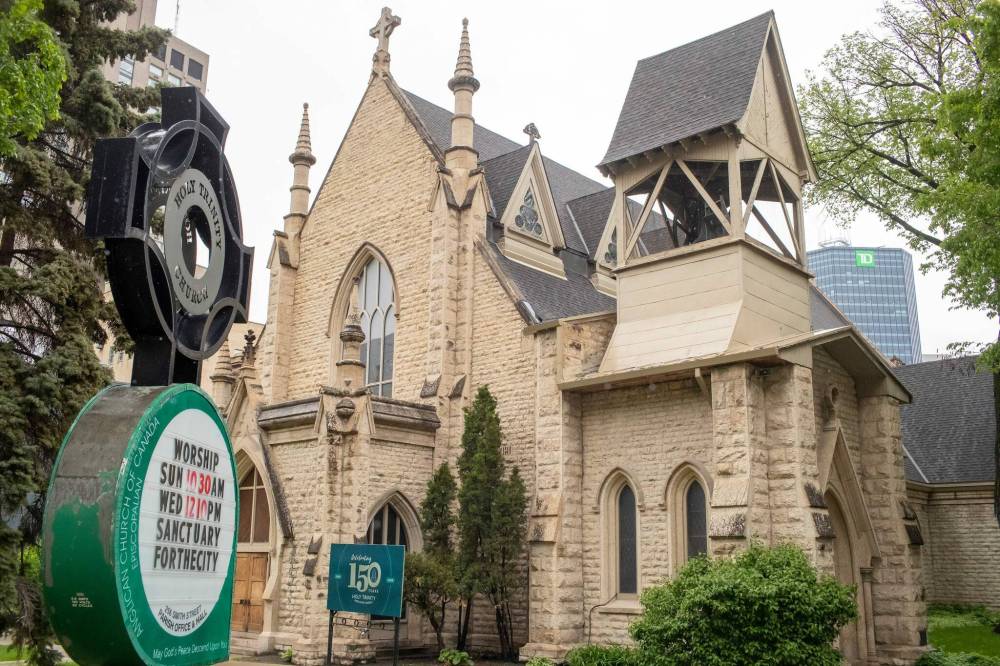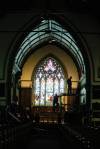Our buildings tell us who we are and once hoped to be
Advertisement
Read this article for free:
or
Already have an account? Log in here »
To continue reading, please subscribe:
Monthly Digital Subscription
$0 for the first 4 weeks*
- Enjoy unlimited reading on winnipegfreepress.com
- Read the E-Edition, our digital replica newspaper
- Access News Break, our award-winning app
- Play interactive puzzles
*No charge for 4 weeks then price increases to the regular rate of $19.00 plus GST every four weeks. Offer available to new and qualified returning subscribers only. Cancel any time.
Monthly Digital Subscription
$4.75/week*
- Enjoy unlimited reading on winnipegfreepress.com
- Read the E-Edition, our digital replica newspaper
- Access News Break, our award-winning app
- Play interactive puzzles
*Billed as $19 plus GST every four weeks. Cancel any time.
To continue reading, please subscribe:
Add Free Press access to your Brandon Sun subscription for only an additional
$1 for the first 4 weeks*
*Your next subscription payment will increase by $1.00 and you will be charged $16.99 plus GST for four weeks. After four weeks, your payment will increase to $23.99 plus GST every four weeks.
Read unlimited articles for free today:
or
Already have an account? Log in here »
Hey there, time traveller!
This article was published 07/06/2024 (528 days ago), so information in it may no longer be current.
I am riding the elevator to the ninth floor of the Union Bank tower, near Old Market Square. We’d been invited on a tour of the newly renovated student dorms above what is now the Paterson GlobalFoods Institute at Red River College Polytechnic. Looking out the window onto Main Street, I can see the Centennial Concert Hall, the Manitoba Museum and Winnipeg city hall below. Main bends slightly to the right as it tracks north, following the river.
I’m suddenly aware of how many times I’ve already seen this view, though I’ve never been in this building before. In bird’s-eye views of old city hall, grainy black-and-white postcards of a growing city, I never realized the photographers were pointing cameras from these windows. The past, as it often is in Winnipeg, is standing right beside me, sharing the view.
RRC Polytech partnered to resurrect the Union Bank tower after decades of neglect. RRC Polytech did this on Princess Street too. An impressive but unstable row of buildings, which bore witness to the old ‘gingerbread’ city hall, the original Market Square and the Public Safety Building reduced to rubble, were spared the same fate. The facades were stabilized and the new campus rose behind them, transforming the West Exchange while preserving its history.
The Paterson GlobalFoods Institute in the Exchange district. (Jesse Boily / Free Press files)
I’ve always been the nostalgic type, searching for remnants and clues of bygone stories. Sifting through newspaper archives and faded maps, stringing together narratives from Hudson’s Bay Co. fur-trade post journals at the provincial archives and faded war diaries, I piece together the cast and storyline of my own happenstance arrival to this land.
My own house whispers its story to me. Plaster falls from the wall, exposing the lath underneath. A message is scrawled on the board in blue pencil: “Hope you enjoy plastering as much as I did! —Bill, 1955.”
Our buildings are more than silent artifacts. They record and recite their own stories, carry their own narrative, guiding the way we use neighbourhoods and how we feel about our city.
Our built history talks to us, if we know how to listen. Sleeping between walls, under baseboards and behind cabinets, we find hairpins and hatpins, a tin toy, a rosary, a silver spoon, a postcard with a familiar address. T
hese aren’t mere objects. They are gifts — offerings given to remind us we share this space with others through time.
These witness buildings aren’t often honoured in Winnipeg. The Royal Alex, the McIntyre Block, the General Post Office. These were all lost decades ago, and when we see their photos beside the flattened sites in our present-day city, we cry, “Why didn’t we keep that beautiful building? How could we have been so shortsighted? So uncreative?”
Many cities rebuild in the name of progress, but in Winnipeg the losses are heartbreaking because they’re due to neglect, not growth. Our shared stories are ignored until declared palliative. Too many buildings have had the wrecking ball as the final reflection in windows where photographers, bankers and journalists enjoyed the view.
Many cities rebuild in the name of progress, but in Winnipeg the losses are heartbreaking because they’re due to neglect, not growth.
There is a wake, a visitation in progress on the corner of Smith and Graham. A silent bell, a waiting rope, the glow of coloured glass. It seems certain time is now limited for Holy Trinity Anglican Church, which joined our infant skyline in 1884, fully two decades before the Union Bank.
Here, we brought our newborn to be blessed. Here we emerged, smiling under a storm of confetti. Here, the beams held our prayers to bring our boys home. Here they heard us grieve them.

BROOK JONES / FREE PRESS FILES Holy Trinity Church at 256 Smith St.
These bricks have vibrated with each note of song, have reflected our voices back to us. The organ keys bear the touch and contours of a century of fingerprints. The polished backs of pews hold every prayer whispered upon them.
For 140 winters, we have been sheltered under this roof at the corner of Smith and Graham. All of the aspirations of who we might have become, all the hopes and dreams and fervent prayers for deliverance, the hairpins and hatpins that no doubt sleep within the walls and between the floorboards, remain within this place.
Our buildings tell us who we are and who we once hoped we could be. Our past stands beside us and beckons us to learn about ourselves, but too often we ignore the call.
Our built history is our heirloom from generations past, and like any heirloom they deserve pride of place and preservation.
Winnipeg needs to think creatively and arrange our city around our past, like the proud facades on Princess Street. We must cast our gaze to our future to preserve what we still have the power to save.
The alternative is, like Holy Trinity Anglican Church, a city that shifts and falters without a foundation to stand upon, no matter how fervent the prayers.
rebecca.chambers@freepress.mb.ca

Rebecca explores what it means to be a Winnipegger by layering experiences and reactions to current events upon our unique and sometimes contentious history and culture. Her column appears alternating Saturdays.
Our newsroom depends on a growing audience of readers to power our journalism. If you are not a paid reader, please consider becoming a subscriber.
Our newsroom depends on its audience of readers to power our journalism. Thank you for your support.







